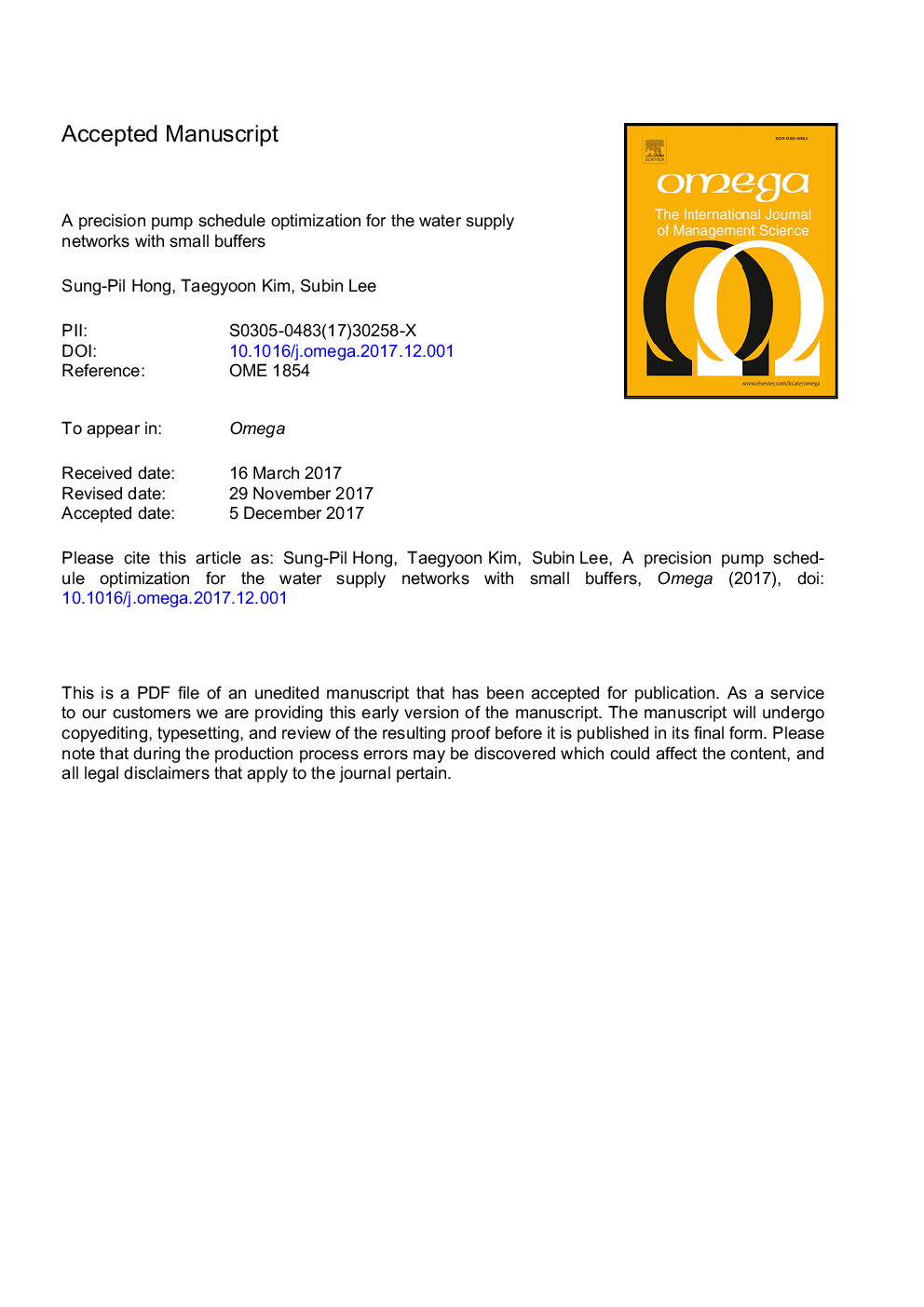| Article ID | Journal | Published Year | Pages | File Type |
|---|---|---|---|---|
| 11011912 | Omega | 2019 | 31 Pages |
Abstract
The study addresses the problem of finding an energy-efficient pump and valve configuration of a water supply network. It is motivated particularly by scantily buffered networks which require both method precision and algorithm efficiency that tightly chase notably dynamic water demand. The model unprecedentedly comprehends physical and hydraulic laws that govern pump-valve configuration along with ensuing flow and energy level. The solution method combines hydraulic relaxation of individual pump characteristic curves to a station curve and an LP-based search performing optimal trade-off between water head and discharge beyond the minimum energy level for each station. With a hamming-distance-type shortest path formulation incorporated into the search steps, it can also minimize both frequency and magnitude of pump-valve reconfiguration. The proposed method achieved an energy-cost saving of 5.9% and did so more consistently than manual operation, while retaining computation time suitable for unit period as short as 15Â min.
Related Topics
Social Sciences and Humanities
Business, Management and Accounting
Strategy and Management
Authors
Sung-Pil Hong, Taegyoon Kim, Subin Lee,
